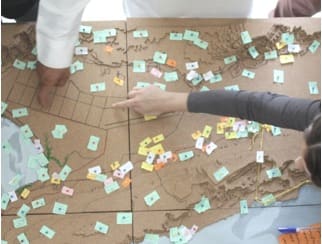
Understand
Resources and tools to support assessment and analysis, including of territory of life governance and management
Methods and Tools (Prioritize any customary or locally familiar methods):
Strengths, Weaknesses, Opportunities, and Limitations / Threats (SWOL/T) analysis
This widely known method can be used at many points in a self-strengthening process, including to “review and renews” approaches and initiatives as part of ongoing learning. There are many resources available to support SWOL or SWOT analysis. Beyond Fences Vol. 2 describes the purpose, key steps, and strengths and drawbacks of SWOL analysis, noting that it is “a structured brainstorming process to elicit group perceptions of a specific aspect of, for instance, a community, environment or project. The aspect is analyzed in terms of the positive factors (strengths), negative factors (weaknesses), possible improvements (opportunities) and constraints (limitations). SWOL analysis can be useful for evaluating activities carried out in a conservation initiative. It can be focused on specific aspects of the initiative, such as services provided by external agencies or activities being undertaken by a local community. It can also be used by specific interests (or stakeholders) to clarify their views on a proposal before meeting with other interest groups.” (Read more at Borrini-Feyerabend with Buchan 1997:163-164)
Others methods to consider include:
- Well-being self-assessments (see Shrumm and Jonas 2012)
- Problem Tree Analysis to understand root causes (see Mayer et al. 2013:36)
- Appreciative Inquiry – asking ‘what is working and how can we build on it?’ (See AI Commons)
Publications:
- Governance Primer – a brief document that provides an introduction to key concepts, terms and principles of protected and conserved area governance
- Governance of Protected Areas: From understanding to action— This comprehensive Guide explores key concepts of governance in territories of life and other protected and conserved areas (Part I), and provides ideas and guidance on governance assessment (Part II and Annexes). Annexes are available for download on the same webpage.
- Assessing forest governance: A Practical Guide to Data Collection, Analysis, and Use
- Gender Indicators: What, Why and How?